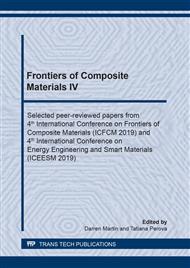p.84
p.89
p.97
p.103
p.109
p.117
p.123
p.130
p.136
Protein Nanoparticles with Enzymatic and Antigen-Binding Activities Induce Th1 Cytokine Gene Expression
Abstract:
To improve protein stability and membrane permeability the protein nanoparticles (NP) were fabricated from enzymes or virus-specific antibodies by nanoprecipitation. Lysozyme NP destroyed bacterial cellular walls. RNase-based NP hydrolyzed RNA. Lipase, catalase and horseradish peroxidase activities were also registered for corresponding protein NP. NP from polyclonal antibodies against the influenza A virus and monoclonal antibodies against hemagglutinin H1, H3; proteins NS and NP could interact with their specific antigens. NP from monoclonal antibodies against the hepatitis B surface antigen bound with the antigen as shown by ELISA. The protein NP were stable in water at 4°C for several months and in the presence of blood sera or saliva for more than 5 days. The protein NP were not toxic for human cells and mice. The protein NP could penetrate and accumulate in cells in 2 hours with maximum after 2 days and subsequent gradual decline until background values. Entry of foreign protein NP into the eukaryotic cells induced cytokine gene expression. RNA of interferon (IFN) a, b and l but not IFN g were detected by reverse transcription with real time PCR. Polarization index (Th2:Th1 cytokine RNA) was near 0. Accordingly, cellular uptake of non-toxic protein NP induced Th1 polarization of immune response.
Info:
Periodical:
Pages:
109-113
Citation:
Online since:
June 2020
Authors:
Price:
Сopyright:
© 2020 Trans Tech Publications Ltd. All Rights Reserved
Share:
Citation:


